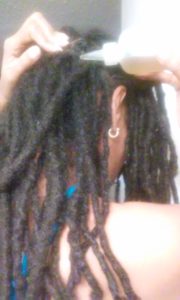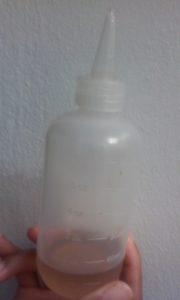Most people who plan to get dreadlocks don’t realize that there’s anything called parting patterns. Choosing the way your hair is parted, can make quite a difference in the way your locs will look a few years from now.
When I was starting my locs journey four years ago, I had no idea about parts. I just did them in little squares. It wasn’t until some years later, I found out that parting methods are very important when you are getting your starter locs.
Ways to Part Your Hair When Getting Dreads
The most common types of parting patterns for dreads are squares/grid, diamonds, triangles, freestyle, fan. Keep in mind that each individual’s parting pattern may come out unique in its own way. For example, your square parts may yield different looking locs than someone else with the same parting.
Texture of Hair and Parting Patterns
Parting your hair a certain way, is best determined on the texture of your hair. For example, some people with finer texture say that parting their starter locs in a triangle pattern helps their locs to look fuller.
Diamond Parting Pattern for Fuller Locs
If you tend to have thin hair and is concerned about your parts looking spaced apart, you should probably go for the diamond or triangle parting method. This will allow your locs to fall in the empty parting space below, creating a fuller head of dreads.
The Way You Part Your Hair and How Your Locs Look
Another thing you should think about when getting starter locs, is how big you want them. Big parts will give you bigger locs, or more likely will show your scalp. If you have thin hair, your parts will even be more obvious.
Thicker Texture Locs and Sectioning
For some people, parting patterns do not make a difference, most likely because their hair is thick. Others may have to wait a while for their hair to get thicker with age and proper locs maintenance.
My Locs Parting Pattern Experience
As for me, I started my dreads using the grid parting pattern, although I don’t think they were all parted in the same size. Some turned out thicker than some.
I also noticed that the locs at the sides are smaller than the rest. I am thinking that I should have parted those a little bigger, to maintain their thickness as they grow. You may want to part certain areas of your hair (thinner areas) bigger than others.
Freeform Dreads and Freestyle Parting
For those of you who are planning on getting freeform dreadlocks, parting pattern is not necessary. You can just use your fingers to grasp a portion of hair, and just twist it in whatever form you like. As your hair starts to lock, it will create its own creative shape.

